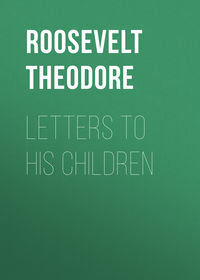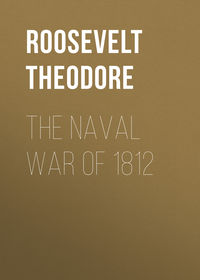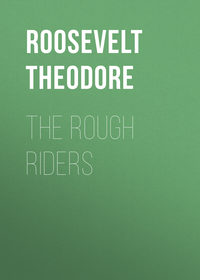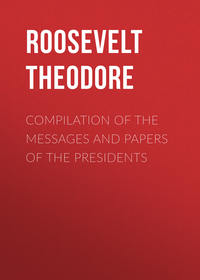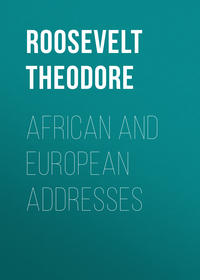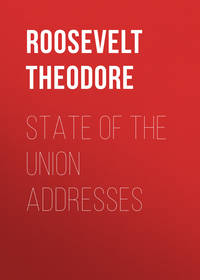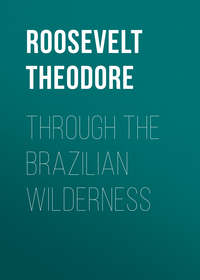 полная версия
полная версияThe Winning of the West, Volume 1
106
Giving to the backwoods society such families as the Seviers and Lenoirs. The Huguenots, like the Germans, frequently had their names Anglicized. The best known and most often quoted example is that of the Blancpied family, part of whom have become Whitefoots, while the others, living on the coast, have suffered a marvellous sea-change, the name reappearing as "Blumpy."
107
To the western American, who was not given to nice ethnic distinctions, both German and Hollander were simply Dutchmen but occasionally we find names like Van Meter, Van Buskirk, Van Sweanngen, which carry their origin on their faces (De Haas, 317, 319. Doddridge, 307).
108
The Scandinavian names in an unlettered community, soon become indistinguishable from those of the surrounding American's—Jansen, Petersen, etc., being readily Americanized. It is therefore rarely that they show their parentage. Still, we now and then come across one that is unmistakable, as Erickson, for instance (see p. 51 of Col. Reuben T. Durrett's admirable "Life and Writings of John Filson," Louisville and Cincinnati, 1884).
109
MS. Journal of Matthew Clarkson, 1766. See also "Voyage dans les Etats-Unis," La Rochefoucauld-Liancourt, Paris, L'an, VII., I., 104.
110
The borderers had the true Calvinistic taste in preaching. Clarkson, in his journal of his western trip, mentions with approval a sermon he heard as being "a very judicious and alarming discourse."
111
McAfee MSS.
112
In the McAfee MSS. there is an amusing mention of the skin of a huge bull elk, killed by the father, which the youngsters christened "old ellick"; they used to quarrel for the possession of it on cold nights, as it was very warm, though if the hairside was turned in it became slippery and apt to slide off the bed.
113
On the mountains the climate, flora, and fauna were all those of the north, not of the adjacent southern lowlands. The ruffed grouse, red squirrel, snow bird, various Canadian warblers, and a peculiar species of boreal field-mouse, the evotomys, are all found as far south as the Great Smokies.
114
Doddridge's "Settlements and Indian Wars," (133) written by an eyewitness; it is the most valuable book we have on old-time frontier ways and customs.
115
The land laws differed at different times in different colonies; but this was the usual size at the outbreak of the Revolution, of the farms along the western frontier, as under the laws of Virginia, then obtaining from the Holston to the Alleghany, this amount was allotted every settler who built a cabin or raised a crop of corn.
116
Beside the right to 400 acres, there was also a preemption right to 1,000 acres more adjoining to be secured by a land-office warrant. As between themselves the settlers had what they called "tomahawk rights," made by simply deadening a certain number of trees with a hatchet. They were similar to the rights conferred in the west now by what is called a "claim shack" or hut, built to hold some good piece of land; that is, they conferred no title whatever, except that sometimes men would pay for them rather than have trouble with the claimant.
117
McAfee MSS. (particularly Autobiography of Robert McAfee).
118
To this day it is worn in parts of the Rocky Mountains, and even occasionally, here and there, in the Alleghanies.
119
The above is the description of one of Boon's rifles, now in the possession of Col. Durrett. According to the inscription on the barrel it was made at Louisville (Ky.), in 1782, by M. Humble. It is perfectly plain; whereas one of Floyd's rifles, which I have also seen, is much more highly finished, and with some ornamentation.
120
For the opinion of a foreign military observer on the phenomenal accuracy of backwoods markmanship, see General Victor Collot's "Voyage en Amérique," p. 242.
121
MS. copy of Matthew Clarkson's Journal in 1766.
122
McAfee MSS. (Autobiography of Robert R. McAfee).
123
Do.
124
Memoirs of the Hist. Soc. of Penn., 1826. Account of first settlements, etc., by John Watson (1804).
125
Do. An admirable account of what such a frolic was some thirty-five years later is to be found in Edward Eggleston's "Circuit Rider."
126
Such incidents are mentioned again and again by Watson, Milfort, Doddridge, Carr, and other writers.
127
McClung's "Western Adventures." All eastern and European observers comment with horror on the border brawls, especially the eye-gouging. Englishmen, of course, in true provincial spirit, complacently contrasted them with their own boxing fights; Frenchmen, equally of course, were more struck by the resemblances than the differences between the two forms of combat. Milfort gives a very amusing account of the "Anglo-Américains d'une espèce particulière," whom he calls "crakeurs ou gaugeurs," (crackers or gougers). He remarks that he found them "tous borgnes," (as a result of their pleasant fashion of eye-gouging—a backwoods bully in speaking of another would often threaten to "measure the length of his eye-strings,") and that he doubts if there can exist in the world "des hommes plus méchants que ces habitants."
These fights were among the numerous backwoods habits that showed Scotch rather than English ancestry. "I attempted to keep him down, in order to improve my success, after the manner of my own country." ("Roderick Random").
128
Watson.
129
Doddridge.
130
McAfee MSS.
131
Watson.
132
McAfee MSS. See also Doddridge and Watson.
133
Doddridge, 156. He gives an interesting anecdote of one man engaged in helping such a pack-train, the bell of whose horse was stolen. The thief was recovered, and whipped as a punishment, the owner exclaiming as he laid the strokes lustily on: "Think what a rascally figure I should make in the streets of Baltimore without a bell on my horse." He had never been out of the woods before; he naturally wished to look well on his first appearance in civilized life, and it never occurred to him that a good horse was left without a bell anywhere.
134
An instance of this, which happened in my mother's family, has been mentioned elsewhere ("Hunting Trips of a Ranchman"). Even the wolves occasionally attacked man; Audubon gives an example.
135
Doddridge, 194. Dodge, in his "Hunting Grounds of the Great West," gives some recent instances. Bears were sometimes dangerous to human life. Doddridge, 64. A slave on the plantation of my great-grandfather in Georgia was once regularly scalped by a she-bear whom he had tried to rob of her cubs, and ever after he was called, both by the other negroes and by the children on the plantation, "Bear Bob."
136
Schopf, I., 404.
137
The insignificant garrisons at one or two places need not be taken into account, as they were of absolutely no effect.
138
Brantz Mayer, in "Tah-Gah-Jute, or Logan and Cresap" (Albany, 1867), ix., speaks of the pioneers as "comparative few in numbers," and of the Indian as "numerous, and fearing not only the superior weapons of his foe, but the organization and discipline which together made the comparatively few equal to the greater number." This sentence embodies a variety of popular misconceptions. The pioneers were more numerous than the Indians; the Indians were generally, at least in the northwest, as well armed as the whites, and in military matters the Indians were actually (see Smith's narrative, and almost all competent authorities) superior in organization and discipline to their pioneer foes. Most of our battles against the Indians of the western woods, whether won or lost, were fought by superior numbers on our side. Individually, or in small parties, the frontiersmen gradually grew to be a match for the Indians, man for man, at least in many cases, but this was only true of large bodies of them if they were commanded by some one naturally able to control their unruly spirits.
139
As examples take Clark's last Indian campaign and the battle of Blue Licks.
140
Doddridge, 161, 185.
141
At the best such a frontier levy was composed of men of the type of Leatherstocking, Ishmael Bush, Tom Hutter, Harry March, Bill Kirby, and Aaron Thousandacres. When animated by a common and overmastering passion, such a body would be almost irresistible; but it could not hold together long, and there was generally a plentiful mixture of men less trained in woodcraft, and therefore useless in forest fighting, while if, as must generally be the case in any body, there were a number of cowards in the ranks, the total lack of discipline not only permitted them to flinch from their work with impunity, but also allowed them, by their example, to infect and demoralize their braver companions.
142
Haywood, DeHaas, Withers, McClung, and other border annalists, give innumerable anecdotes about these and many other men, illustrating their feats of fierce prowess and, too often, of brutal ferocity.
143
McAfee MSS. The story is told both in the "Autobiography of Robert McAfee," and in the "History of the First Settlement on Salt River."
144
Incidents of this sort are frequently mentioned. Generally the woman went back to her first husband. "Early Times in Middle Tennessee," John Carr, Nashville, 1859, p. 231.
145
See "A Short History of the English Colonies in America," by Henry Cabot Lodge (New York, 1886), for an account of these people.
146
The regulators of backwoods society corresponded exactly to the vigilantes of the western border to-day. In many of the cases of lynch law which have come to my knowledge the effect has been healthy for the community; but sometimes great injustice is done. Generally the vigilantes, by a series of summary executions, do really good work; but I have rarely known them fail, among the men whom they killed for good reason, to also kill one or two either by mistake or to gratify private malice.
147
See Doddridge.
148
McAfee MSS.
149
Doddridge.
150
Said one old Indian fighter, a Col. Joseph Brown, of Tennessee, with quaint truthfulness, "I have tried also to be a religious man, but have not always, in a life of so much adventure and strife, been able to act consistently."—Southwestern Monthly, Nashville, 1851, I., 80.
151
This is true as a whole; but along the Mississippi, in the extreme west of the present Kentucky and Tennessee, the Chickasaws held possession. There was a Shawnee town south of the Ohio, and Cherokee villages in southeastern Tennessee.
152
The backwoodsmen generally used "trace," where western frontiersmen would now say "trail."
153
Dr. Thomas Walker, of Virginia. He named them after the Duke of Cumberland. Walker was a genuine explorer and surveyor, a man of mark as a pioneer. The journal of his trip across the Cumberland to the headwaters of the Kentucky in 1750 has been preserved, and has just been published by William Cabell Rives (Boston: Little, Brown & Co.). It is very interesting, and Mr. Rives has done a real service in publishing it. Walker and five companions were absent six months. He found traces of earlier wanderers—probably hunters. One of his companions was bitten by a bear; three of the dogs were wounded by bears, and one killed by an elk; the horses were frequently bitten by rattlesnakes; once a bull-buffalo threatened the whole party. They killed 13 buffaloes, 8 elks, 53 bears, 20 deer, 150 turkeys and some other game.
154
Hunters and Indian traders visited portions of Kentucky and Tennessee years before the country became generally known even on the border. (Not to speak of the French, who had long known something of the country where they had even made trading posts and built furnaces, as see Haywood, etc.) We know the names of a few. Those who went down the Ohio, merely landing on the Kentucky shore, do not deserve mention; the French had done as much for a century. Whites who had been captured by the Indians, were sometimes taken through Tennessee or Kentucky, as John Salling in 1730 and Mrs. Mary Inglis in 1756 (see "Trans-Alleghany Pioneers," Collis, etc.). In 1654 a certain Colonel Wood was in Kentucky. The next real explorer was nearly a century later, though Doherty in 1690, and Adair in 1730, traded with the Cherokees in what is now Tennessee. Walker struck the head-water of the Kentucky in 1750; he had been to the Cumberland in 1748. He made other exploring trips. Christopher Gist went up the Kentucky in 1751. In 1756 and 1758 Forts Loudon and Chisset were built on the Tennessee head-waters, but were soon afterwards destroyed by the Cherokees. In 1761, '62, '63 and for a year or two afterwards a party of hunters under the lead of one Wallen hunted on the western waters, going continually farther west. In 1765 Croghan made a sketch of the Ohio River. In 1766 James Smith and others explored Tennessee. Stoner, Harrod, and Lindsay, and a party from South Carolina were near the present site of Nashville in 1767, in the same year John Finley and others were in Kentucky, and it was Finley who first told Boon about it and led him thither.
155
The attempt to find out the names of the men who first saw the different portions of the western country is not very profitable. The first visitors were hunters, simply wandering in search of game, not with any settled purpose of exploration. Who the individual first-comers were, has generally been forgotten. At the most it is only possible to find out the name of some one of several who went to a given locality. The hunters were wandering everywhere. By chance some went to places we now consider important. By chance the names of a few of these have been preserved. But the credit belongs to the whole backwoods race, not to the individual backwoodsman.
156
August 22, 1734 (according to James Parton, in his sketch of Boon). His grandfather was an English immigrant; his father had married a Quakeress. When he lived on the banks of the Delaware, the country was still a wilderness. He was born in Berks Co.
157
The inscription is first mentioned by Ramsey, p. 67. See Appendix C, for a letter from the Hon. John Allison, at present (1888) Secretary of State for Tennessee, which goes to prove that the inscription has been on the tree as long as the district has been settled. Of course it cannot be proved that the inscription is by Boon; but there is much reason for supposing that such is the case, and little for doubting it.
158
He was by birth a Virginian, of mixed Scotch and Welsh descent. See Collins, II., 336; also Ramsey. For Boon's early connection with Henderson, in 1764, see Haywood, 35.
159
Even among his foes; he is almost the only American praised by Lt.-Gov. Henry Hamilton of Detroit, for instance (see Royal Gazette, July 15, 1780).
160
John Finley.
161
"The Adventures of Colonel Daniel Boon, formerly a hunter"; nominally written by Boon himself, in 1784, but in reality by John Filson, the first Kentucky historian,—a man who did history good service, albeit a true sample of the small hedge-school pedant. The old pioneer's own language would have been far better than that which Filson used; for the latter's composition is a travesty of Johnsonese in its most aggravated form. For Filson see Durrett's admirable "Life" in the Filson Club Publications.
162
The Nieblung Lied tells of Siegfried's feats with bear, buffalo, elk, wolf, and deer:
"Danach schlug er wieder einen Buffel und einen ElkVier starkes Auer nieder und einen grimmen Schelk,So schnell trug ihn die Mahre, dasz ihm nichts entsprang;Hinden und Hirsche wurden viele sein Fang.……. ein Waldthier furchterlich,Einen wilden Baren."Siegfried's elk was our moose; and like the American frontiersmen of to-day, the old German singer calls the Wisent or Bison a buffalo—European sportsmen now committing an equally bad blunder by giving it the name of the extinct aurochs. Be it observed also that the hard fighting, hard drinking, boastful hero of Nieblung fame used a "spur hund," just as his representative of Kentucky or Tennessee used a track hound a thousand years later.
163
His name was John Stewart.
164
His remaining absolutely alone in the wilderness for such a length of time is often spoken of with wonder; but here again Boon stands merely as the backwoods type, not as an exception. To this day many hunters in the Rockies do the same. In 1880, two men whom I knew wintered to the west of the Bighorns, 150 miles from any human beings. They had salt and flour, however; but they were nine months without seeing a white face. They killed elk, buffalo, and a moose; and had a narrow escape from a small Indian war party. Last winter (1887-88) an old trapper, a friend of mine in the days when he hunted buffalo, spent five months entirely alone in the mountains north of the Flathead country.
165
Deposition of Daniel Boon, September 15, 1796. Certified copy from Deposition Book No. I, page 156, Clarke County Court, Ky. First published by Col. John Mason Brown, in "Battle of the Blue Licks," p. 40 (Frankfort, 1882). The book which these old hunters read around their camp-fire in the Indian-haunted primaeval forest a century and a quarter ago has by great good-luck been preserved, and is in Col. Durrett's library at Louisville. It is entitled the "Works of Dr. Jonathan Swift, London, MDCCLXV," and is in two small volumes. On the title-page is written "A. Neelly, 1770"
Frontiersmen are often content with the merest printed trash; but the better men among them appreciate really good literature quite as much as any other class of people. In the long winter evenings they study to good purpose books as varied as Dante, Josephus, Macaulay, Longfellow, Parton's "Life of Jackson," and the Rollo stories—to mention only volumes that have been especial favorites with my own cowboys and hunters.
166
MS. diary of Benj. Hawkins, 1796. Preserved in Nash. Historical Soc. In 1796 buffalo were scarce; but some fresh signs of them were still seen at licks.
167
Haywood, p. 75, etc. It is a waste of time to quarrel over who first discovered a particular tract of this wilderness. A great many hunters traversed different parts at different times, from 1760 on, each practically exploring on his own account. We do not know the names of most of them; those we do know are only worth preserving in county histories and the like; the credit belongs to the race, not the individual.
168
From twenty to forty. Compare Haywood and Marshall, both of whom are speaking of the same bodies of men; Ramsey makes the mistake of supposing they are speaking of different parties; Haywood dwells on the feats of those who descended the Cumberland; Marshall of those who went to Kentucky.
169
The so-called mound builders; now generally considered to have been simply the ancestors of the present Indian races.
170
Led by one James Knox.
171
His real name was Kasper Mansker, as his signature shows, but he was always spoken of as Mansco.
172
McAfee MSS. ("Autobiography of Robt. McAfee"). Sometimes the term Long Hunters was used as including Boon, Finley, and their companions, sometimes not; in the McAfee MSS. it is explicitly used in the former sense.
173
See Haywood for Clinch River, Drake's Pond, Mansco's Lick, Greasy Rock, etc., etc.
174
A hunter named Bledsoe; Collins, II., 418.
175
Carr's "Early Times in Middle Tennessee," pp. 52, 54, 56, etc.
176
The hunter Bledsoe mentioned in a previous note.
177
As Haywood, 81.
178
This continued to be the case until the buffalo were all destroyed. When my cattle came to the Little Missouri, in 1882, buffalo were plenty; my men killed nearly a hundred that winter, though tending the cattle; yet an inexperienced hunter not far from us, though a hardy plainsman, killed only three in the whole time. See also Parkman's "Oregon Trail" for an instance of a party of Missouri backwoodsmen who made a characteristic failure in an attempt on a buffalo band.
179
See Appendix.
180
An English engineer made a rude survey or table of distances of the Ohio in 1766.
181
Collins states that in 1770 and 1772 Washington surveyed small tracts in what is now northeastern Kentucky; but this is more than doubtful.
182
All of this is taken from the McAfee MSS., in Colonel Durrett's library.
183
McAfee MSS. A similar adventure befell my brother Elliott and my cousin John Roosevelt while they were hunting buffalo on the staked plains of Texas in 1877.
184
They evidently wore breech-clouts and leggings, not trowsers.
185
McAfee MSS.
186
Filson's "Boon."
187
October 10, 1773, Filson's "Boon." The McAfee MSS. speak of meeting Boon in Powell's Valley and getting home in September; if so, it must have been the very end of the month.
188
The account of this journey of Floyd and his companions is taken from a very interesting MS. journal, kept by one of the party—Thomas Hanson. It was furnished me, together with other valuable papers, through the courtesy of Mr. and Mrs. Daniel Trigg, of Abingdon, Va., and of Dr. George Ben. Johnston, of Richmond, to whom I take this opportunity of returning my warm thanks.
189
From the house of Col. William Preston, "at one o'clock, in high spirits." They took the canoe at the mouth of Elk River, on the 16th. Most of the diary is, of course, taken up with notes on the character and fertility of the lands, and memoranda of the surveys made. Especial comment is made on a burning spring by the Kanawha, which is dubbed "one of the wonders of the world."
190
They received this news on April 17th, and confirmation thereof on the 19th. The dates should be kept in mind, as they show that the Shawnees had begun hostilities from a fortnight to a month before Cresap's attack and the murder of Logan's family, which will be described hereafter.
191


